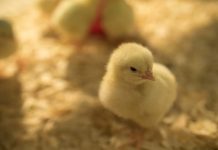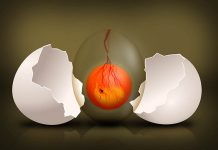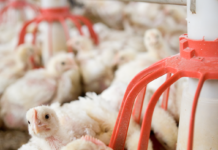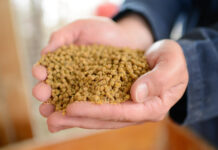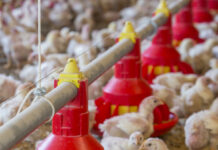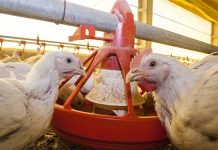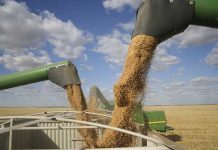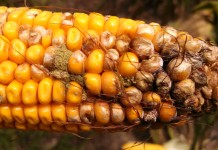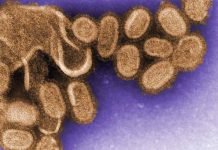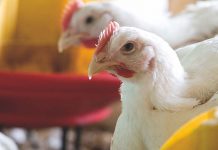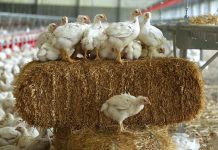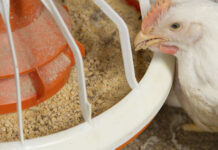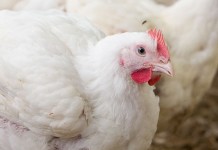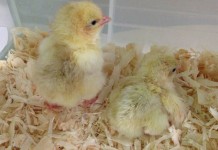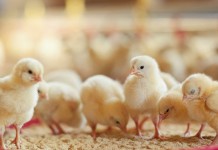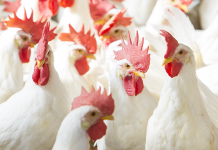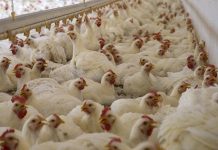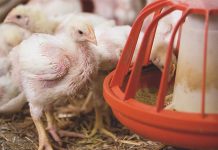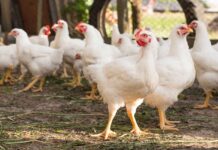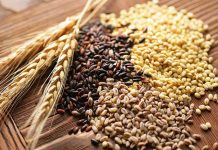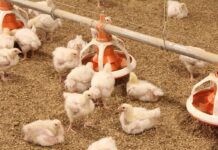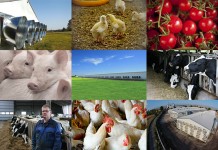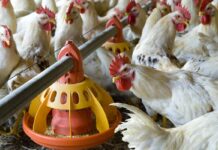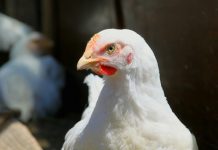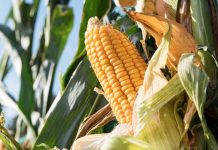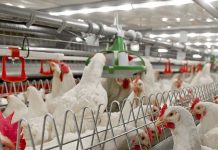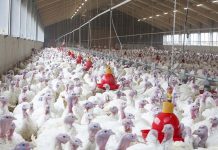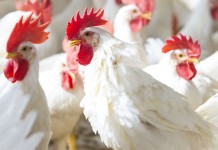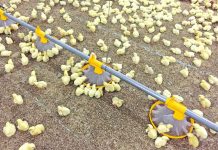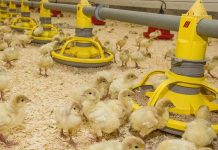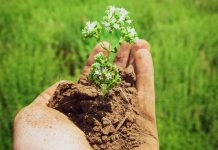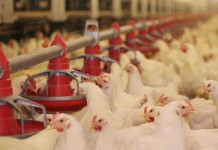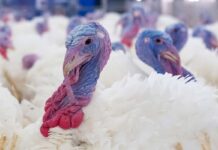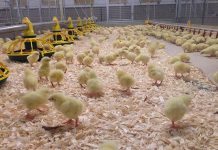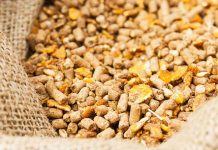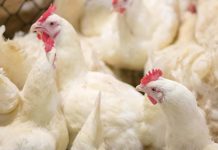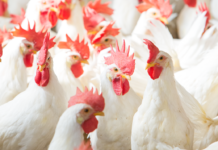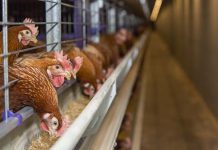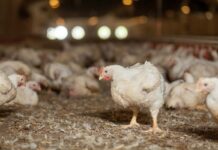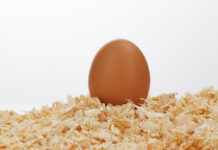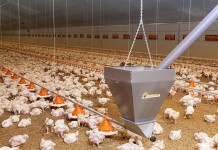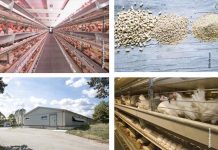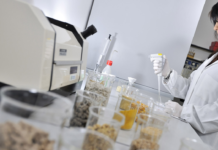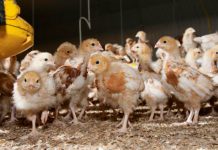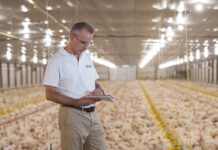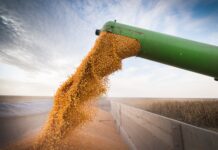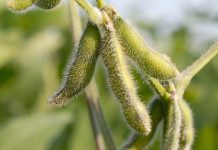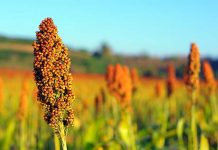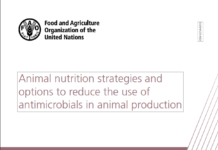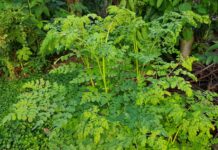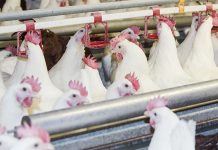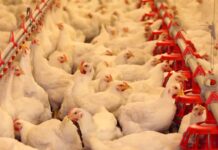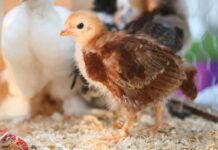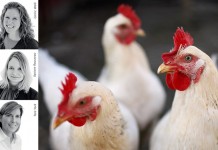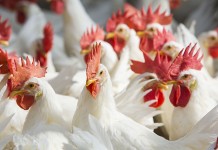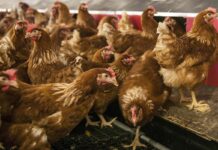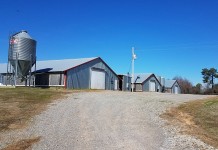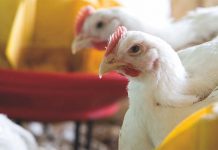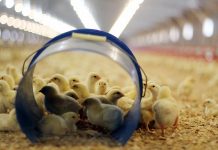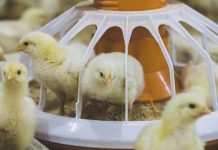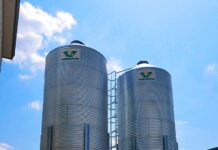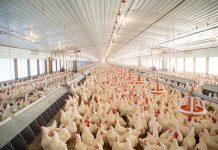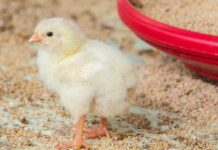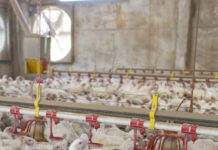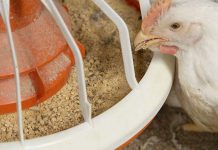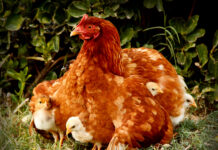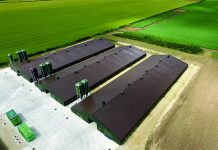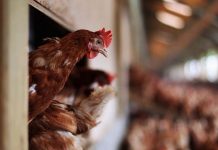A new perspective on feeding broiler breeders
Due to sophisticated genetic selection programs carried out by poultry breeding companies such as Aviagen, today’s broilers can grow with very efficient feed conversion...
The potential of perinatal nutrition
Based on Darwin’s theory of adaptive evolution and Mendel’s fundamental laws of heritability, breeding and genetic selection for increased growth rate and meat yield...
Effect of multi-xylanase system on growth performance and gut health in broilers
Non-starch polysaccharides (NSP), particularly arabinoxylans (AX), with complex biochemical structures are one of the main causative factors for impaired growth performance and poor gut...
Use of commercial premixes with low levels of organic trace minerals on egg production...
Common industry practice is to supply trace minerals well above published recommendations. An experiment was conducted to examine the effects of two commercial premixes...
Apparent metabolisable energy of common cereal grains for broiler chickens is influenced by bird...
The current study was conducted to investigate the influence of broiler age on the apparent metabolisable energy (AME) and nitrogen-corrected AME (AMEn) of four...
Dietary energy, digestible lysine and available phosphorus levels influence growth performance and carcass traits...
Energy (E) and amino acids (AA) are two of the most expensive components in broiler diets. There is no general consensus regarding the interaction...
Effect of arginine and lysine on broiler chickens
Arginine is an essential amino acid for poultry and plays crucial roles in different biological pathways. Recent findings highlighted that the recommended levels of...
Feed borne mycotoxins: the threat to poultry?
Mycotoxins are metabolites produced by molds (fungi) that can infest crops pre-harvest and can continue to flourish under sub-optimal storage conditions. Grains with high...
H7N9 flu mutation identified that allows immune system escape
The research, published in the Journal of Virology, demonstrated that small genetic differences in the virus surface proteins can prevent antibodies that protect against...
Reducing undigested protein available at the intestinal wall on broilers
An experiment was conducted to evaluate the effects of supplementing an inherently thermo stable protease in broilers fed diets based on single raw materials,...
Effects of low protein and balanced amino acid levels on birds under subclinic NE
One benefit of low protein (LP) diets is improving gut health in a future of antibiotic-growth promoter free diets.
Drew et al., (2004) found an...
Dietary approaches to control Necrotic Enteritis in broilers
Necrotic Enteritis (NE) occurs in broilers due to an overabundance of C. perfringens and is usually associated with predisposing factors which include coccidial challenge,...
Probiotics as an alternative to antibiotics for treating lameness in broilers
The pathogenesis leading to a form of lameness known as bacterial chondronecrosis with osteomyelitis (BCO) appears to be initiated by mechanical microfracturing of susceptible...
Immediate post-hatch nutritional restriction in broilers
The effect on broiler muscle development and occurence of intramuscular fat.
Neonatal nutrition and immediate post hatch nutritional restriction represent an important facet of broiler...
The effect of microbial challenge on the intestinal proteome of broilers
In broiler production intestinal health and function is paramount to achieving efficient feed utilisation and growth.
Uncovering the localised molecular mechanisms that occur during the...
High levels of cottonseed meal supplemented with composite microbial enzymes
Effects of cottonseed meal supplemented with composite microbial enzymes on broiler chickens.
Soybean meal (SBM) is the premier plant protein source used by the poultry...
The future of probiotics
USPOULTRY and the USPOULTRY Foundation announce the completion of a funded research project at the Western University of Health Sciences in Pomona, Calif., in...
Training the animal microbiome to degrade fibre with NSPase
A new perspective on the mode of action of fibre-degrading enzymes NSPase.
Increased understanding of NSPase mode of action is presenting a new perspective on...
Influence of age on the standardised ileal amino acid digestibility of maize and barley...
Grains are the major energy sources in broilers. However, they also supply about 40% of the total dietary protein and contribute significantly to the...
Changing role of poultry nutritionist in a changing industry
Reflecting back on 30 years of working in the poultry industry as nutritionists we realize that the biggest changes that have occurred have mostly...
Impact of grain type on performance in broilers under Necrotic Enteritis challenge
The aim of this study was to investigate the effect of grain type on performance and gut microbiota composition in broiler chickens under a...
Inclusion of black soldier fly larvae in a meat chicken diet has minor effect...
The caecal microbiota composition of commercial broilers is essential to the poultry industry as it can affect the broiler’s health and performance.
Bioactive components of...
Feed Conversion Ratio optimized for farmer profit
The farmers’ cost for animal feed is one of the main expenditures consisting of 60-70% of the overall producer costs. These producer costs are...
Impact of dietary soluble non-starch polysaccharide levels on the gastrointestinal environment of young broilers
The dietary fibre content of broilers diets is frequently neglected during feed formulation, despite the prevalence of fibrous material in feed ingredients and notable...
Site and extent of digestion on poultry production
In poultry formulation and production of feed has evolved extensively in the last century with the identification of required nutrients, and subsequent and continuing...
Managing the risk makes the difference in mycotoxin control
A webinar on the results of the 2017 harvest analyses in terms of mycotoxin contamination has been recently held. Two experts on the matter...
Precision feeding of broiler breeders
Precision livestock feeding relies on real-time sensor feedback from individual birds to decide whether or not to allocate feed, according to the needs of...
The value of digestibility coefficients and protein
At all times and for all human cultures animal protein took an important part of nutrient supply and has been always of a high...
Lactobacillus acidophilus D2/CSL (CECT4529): 35 years of Italian research (1985-2020)
The history of the probiotic strain Lactobacillus acidophilus D2/CSL (CECT 4529) follows that of many strains produced by Centro Sperimentale del Latte and acts...
Scientifically validated results to raise poultry production profitability
The Poultry Science Association 2017 Annual Meeting took place in Orlando, Florida on July 17-20. Being the most prestigious scientific event for poultry in...
Low protein diets in broilers
Some recent research at the Arkansas Agriculture Experiment Station Poultry Research Farm has been focused on low protein diets in broilers. Many nutritionists rely...
NSP enzymes, gut microbiota and fermentation products
Arabinoxylans account for 50-70% of the NSP feed enzymes present in cereal grains and make up the majority of cell wall NSP in corn,...
Trials show oregano essential oil supports anticoccidial vaccination
Oregano essential oil, well-documented for its antimicrobial action when included in the diets of various poultry species, has been found to be particularly effective...
The relationship between feed particle size, gizzard development and broiler performance
Anatomy of the stomach
The stomach of the chicken consists of two chambers, the proventriculus or glandular stomach and the gizzard or muscular stomach.
The proventriculus...
Nutritional economics for commercial turkey operations
Feed is the single biggest cost to a turkey operation, 60% to 70% of the cost of production is related to feed, with energy...
Research examines different dietary treatments for woody breast
USPOULTRY and the USPOULTRY Foundation announce the completion of a funded research project at Auburn University in Auburn, Alabama, in which researchers examined different...
Effects of dietary insoluble and soluble non-starch polysaccharides on performance and ileal and excreta...
This study examined the effect of dietary insoluble and soluble non-starch polysaccharides (NSP) in common broiler diets on performance and ileal and excreta moisture...
The role of mechanistic theory in delaying the development of NSPases
This brief paper attempts to review the history of development of the mechanistic theories for NSPases and how this has possibly delayed advances.
NSPase feed...
IFIF: Better nutrition for improved animal health
The International Feed Industry Federation (IFIF) underlined its commitment to supporting efforts by the World Organisation for Animal Health (OIE) to strengthen animal health...
Chelated copper compared to antibiotics effect on gut health in broilers
In this study the specific interventions of chelated copper methionine hydroxy analogue (cuMHAC) and a combination of cuMHAC and an effective foregut acidifier were...
Vitamin D in laying hens: how high is high enough?
In 2010, the Institute of Medicine in the United States reviewed current literature and changed the estimated average requirement of 400 IU/day to a...
On free amino acids – Their role in starch and protein digestive dynamics
The quantity of glucose and amino acids absorbed from the small intestine is a function of dietary concentrations, feed intakes and digestibility coefficients. Moreover,...
Corn milling efficiency and particle size effects on pullet growth performance
Corn is usually ground locally at the feed mill, while soybean meal is pre-processed and feed mills have little control over its particle size...
Effectiveness of a double choice test to assess dietary taste preferences in broiler chickens
Investigations into the taste system of chickens can help to improve poultry feeding strategies. However, a comprehensive study on dietary taste preferences for broilers...
Natural antioxidants and vitagene concept in poultry production – Second part
From vitamins to vitagene. In this second part the focus will be on the Vitagene concept, which refers to a group of genes involved...
What is the influence of nutrition and management on egg weight?
Managing egg weight is important for farmers and can greatly vary depending on market demand. Obtaining an egg size in line with market demand...
Bacillus Subtilis improves performance of broilers fed medicated or non-medicated feed
Animal digestive health is key to obtain optimal performance. Antibiotic growth promoters (AGPs) have long been shown to be very effective to develop and...
Keel bone integrity in layers – Observations, nutritional remedies, and myth-busting
The issue of keel bone deformities and abnormalities is different depending on various housing systems for the birds. Keel fractures have received a lot...
Fatty acids in ABF poultry production: a nutritionist’s perspective
The beneficial role of short-chain fatty acids and medium chain fatty acids on gut health and reducing pathogen colonization has been well documented over...
Effect of two different fibre sources on growth and immune function in grower layer-pullets
This study was conducted to evaluate the effect of two different fibre sources on pullet growth, gut immune tissue, and lymphocyte proliferation of strain...
Response of broilers fed phytase enzymes of different optimal pH ranges alone or in...
Dr. Kelley Wamsley and colleagues at the Mississippi State University Poultry Science Department recently completed a research project that investigated how broilers respond when...
How much dietary protein is too much
Dietary protein accounts largely for most of broiler feeding costs which in return shrink revenue if protein is not used efficiently. Tuning dietary protein...
NIRS study on nutritional profiles of 100 soybean meal samples from USA and Brazil
This paper compares the nutrient profile of soybean meal (SBM) samples from the USA and Brazil. Proximate analysis, total amino acids, standardized ileal digestibility...
Energy utilization in broilers fed a sorghum-based diets supplemented with phytase and carbohydrases
This study was conducted to evaluate the endogenous enzyme activities and energy utilization of broilers fed sorghum-based diets supplemented with phytase and carbohydrases
Broilers were...
FAO published a report on animal nutrition strategies
FAO’s publication helps producers use nutrition strategies to reduce the use of antibiotics in their farms. Antimicrobial resistance (AMR) is an increasing threat to...
The use of moringa oleifera leaf meal (MOLM) and its extract in low protein...
The objective of the present study was to evaluate the effect of incorporating different levels of MOLM and its extract - as natural antioxidants...
Antioxidants in broiler breeder diets can affect offspring performance
In a series of experiments, it was shown that antioxidants in broiler breeder diets can affect broiler performance trans-generationally. To study this, a polyphenol...
Lowering dietary calcium and available phosphorus in broilers
The aim of this trial was to investigate the effect of lowering dietary calcium (Ca) and available phosphorus (av.P) during Starter (0 to 10d),...
The importance of feeding time observation
Achieving proper bodyweight, flock uniformity, and sexual maturity at light stimulation are some of the biggest management challenges for broiler breeder farms.
Today’s breeder pullets...
Layer nutrition associated with different production systems
The egg industry continues to grow; in the past this was in cage production, but today’s growth is focused on alternative production systems such...
New applications such as superdosing of phytase to maximize phytate destruction to improve performance...
It is well documented that phytase supplementation in broiler diets improves P and Ca utilization through the destruction of phytate (IP6) and thereby allows...
Evaluating phosphorous equivalency of phytases
The use of exogenous enzymes in non-ruminant nutrition is a valuable tool to increase digestibility and therefore spare the inclusion of expensive nutrients whilst...
Calcium nutrition, bone metabolism, and eggshell quality in longer-persisting layers
As regard layers management, rather than being depopulated at 60 to 70 weeks of age, or being moulted to allow for additional production cycles,...
Water quality guidelines for turkeys
Turkeys typically consume twice as much water as feed, so it is important to provide a clean, healthy water supply. Water not only serves...
Using sunflower meal in broilers with the addition of a carbohydrase complex
Sunflower seeds are extensively grown for oil production for human consumption. Therefore, a great amount of sunflower meal becomes available for use in feed...
Broiler breeders, a research on alternative feeding programs and photostimulation periods
USPOULTRY and the USPOULTRY Foundation announce the completion of a funded research project at the University of Georgia in Athens, Georgia, in which researchers...
Effectiveness of a double choice test to assess dietary taste preferences in broilers
Investigations into the taste system of broilers can help to improve poultry feeding strategies. However, a comprehensive study on dietary taste preferences for broilers...
Low protein diets supplemented with glycine, glutamine or arginine for broilers
A previous study highlighted differences between a low protein (LP) diet and a higher concentration of amino acids (AA) for intestinal permeability and performance...
Development and evaluation of probiotics
As restrictions to antibiotic growth promoters (AGP) have become more prevalent, producers have turned to several technologies as probiotics - Direct Fed Microbials to...
VAL-CO, clean and dry feed from delivery to consumption
A VAL-CO feed storage and transport system is designed to keep feed clean and dry from delivery to consumption. Store your feed in our...
The challenge of feeding modern broiler breeders
Broiler breeders are expected to produce about 150 chicks in 40 weeks of production and even though it is commonly believed that selection for...
Using a multi-protease enzyme in poultry diets to improve broilers performance
The present study investigates the effect of protease on the productivity of broilers under reduced crude protein (CP) and amino acid (AA) diet conditions....
Methionine supplementation reduces plasma amino acid circulation and enhanced apparent digestibility in broiler chickens
The objective of this study was to evaluate the impact of methionine supplementation on amino acid concentration in systemic plasma, apparent amino acid digestibilities...
Low protein diets downregulate hepatic enzymes
Low protein diets have clear benefits for the poultry industry with regards to health, welfare and production.
Dean et al., (2006) found that supplementing low...
Hybrid Feed – New approach in layer hen feed at start of production
The actual genetic improvements in layer hens are providing the market with a layer hen producing saleable size eggs quicker than before and extending...
The bioavailability of zinc in poultry: what does literature say?
Zinc bioavailability: zinc is an essential trace element for all the animals, including broilers. In case of deficiency, alteration of growth performance and distortion...
Path to the 100 week age layers in cage free systems
Egg producers are always looking for ways to improve layer hen’s efficiency as, nowadays, the genetic potential of layers is targeting an extended age...
Effects of probiotic bacillus Amyloliquefaciens H57 on performance and intestinal microbiota of chickens
Direct fed microbials are a potential probiotic alternative to antibiotic
growth promoters for improving animal production and preventing enteric pathogen
infections. We are studying the effects...
Effects of yeast and its derivatives on meat yield
The present experiment was designed to determine the effects of yeast and its derivatives on meat yield and hematological indices of broiler chickens challenged...
Estimated total cereal production in the EU-27 for the 2022 harvest
Experts from the Copa and Cogeca working groups on cereal and oilseed gathered in Brussels, with an estimated total cereal production of 277 million...


